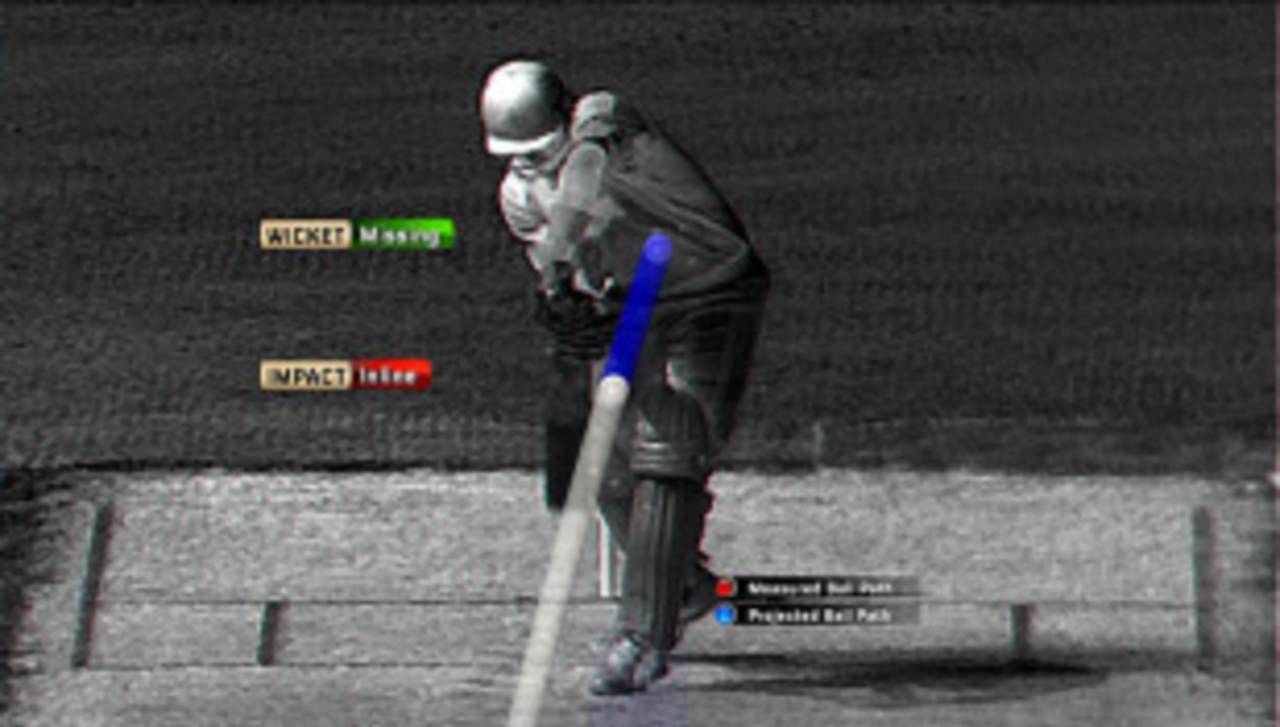The most contentious aspect of the Decision Review System - the ball-tracker - is being put to the test by the ICC at the Cambridge University to establish the accuracy of the two rival tracker systems accredited by the ICC for the DRS.
The ball-tracking technologies currently in use for the DRS - the Hawk-Eye and the Virtual Eye - are being tested by a company called Computer Vision Consulting Limited. The results of the test should be available to the ICC's cricket committee in time for its next meeting in May this year.
Dave Richardson, the ICC's general manager of cricket, told ESPNcricinfo in an
interview that the company had been asked to review "the level of accuracy and reliability of the two ball-tracking companies ... In terms of accuracy we want to know whether their virtual depictions of where the ball has pitched and where the ball has impacted the batsman accord with the reality, and whether their predictions as to where the ball would have hit the stumps are correct."
The issue of reliability he said was to find out "the percentage of times they can deliver an accurate tracking. If, in a Test, there are 60 lbw appeals and the ball-tracking technology is only able to deliver an accurate tracking on, for example, 50 of those occasions, then they would not be regarded as very reliable. On the other hand, if they were getting it right on 97 out of 100 occasions, we would probably regard that as being acceptable."
Before the introduction of the DRS in 2008, Richardson said, the ICC had conducted some basic manual testing which had left them satisfied before launching the system. The current test he said was "a far more detailed review by a completely independent party. Hawk-Eye and Virtual Eye both tell us how accurate they are, but this will verify those claims." The contention between the two rival ball-tracker technologies was largely around the number of frame rates offered by their cameras in order to provide data to work with the ball tracker.
The ball-tracking technology was first included as part of the DRS' earliest mandatory requirements but in June, the ICC made it optional, and the Hot Spot infrared thermal imaging camera compulsory. Both technologies have come under criticism, due to a series of what appeared to be flaws.
When responding to the criticism that the ICC should have tested all the available DRS technology thoroughly, Richardson said, "We were satisfied with the testing we did. We tested the accuracy as far as we could, and to an extent it showed that the technology was at least accurate and reliable enough for it to be used in the manner that we have used it."
Most misgivings about the accuracy of the technology, he said, came from people being "misled" by what they saw on TV or the angle of sight while watching a contentious dismissal. The picture of slow motion replays under DRS often came, he said, from cameras set to the side of the bowler's arm rather than directly behind it.
"People see a replay on TV and say, 'That looks as if it was hitting leg stump.' But then Hawk-Eye shows it just missing and you say to yourself, 'That just cannot be.' But what people don't realise is that the camera for the slow-motion replay might not have been behind the bowler's arm. There are three cameras in a row and the one used for slow-motion replays is one of the ones on the side. So, often the picture you see on your TV screen is slightly misleading."
What was needed, he said, was to give the viewer "the evidence to prove that [people] should trust the evidence provided by the ball-tracking technology, not what they might see on television."
There were no plans to test the Hot Spot technology because, "Hot Spot is real, it's not a virtual picture." What the owners will be working on is to make their cameras more sensitive so that the "smallest of touches" could be visible. The priority of the infra-red cameras in use in the DRS was their "sensitivity, that is, its ability to generate a visible heat mark as opposed to clearly defined pictures which look nice but do not provide the level of sensitivity to pick up the faintest of edges."
He admitted what while Hot Spot cameras may not be able to pick up the very faint touches, "they will never show a mark where there is no touch and they are also very useful in distinguishing between whether the ball has touched the bat or gloves, as opposed to, for example, the thigh guard, arm guard, shoulder or helmet."
He said in time, the ICC would like communication between the on-field and third umpire during a DRS discussion to be heard on TV. "Hopefully when the umpires are so confident in the system and so well versed in using it, we will be able to do that. That's the aim."
